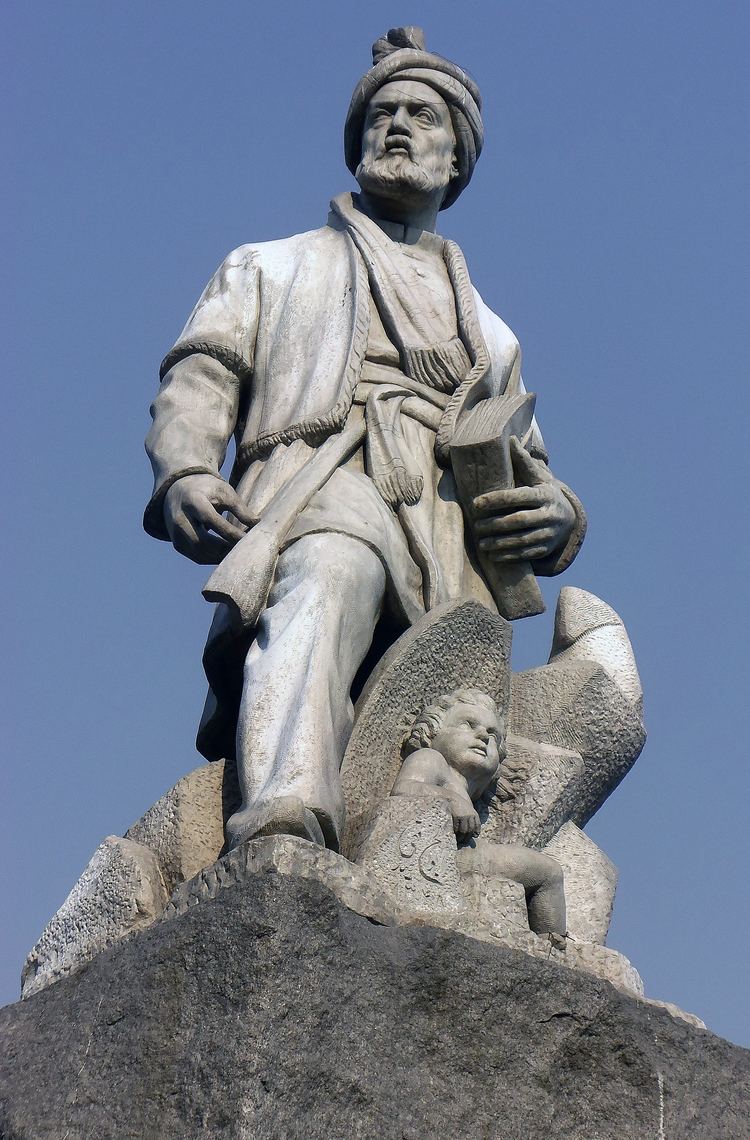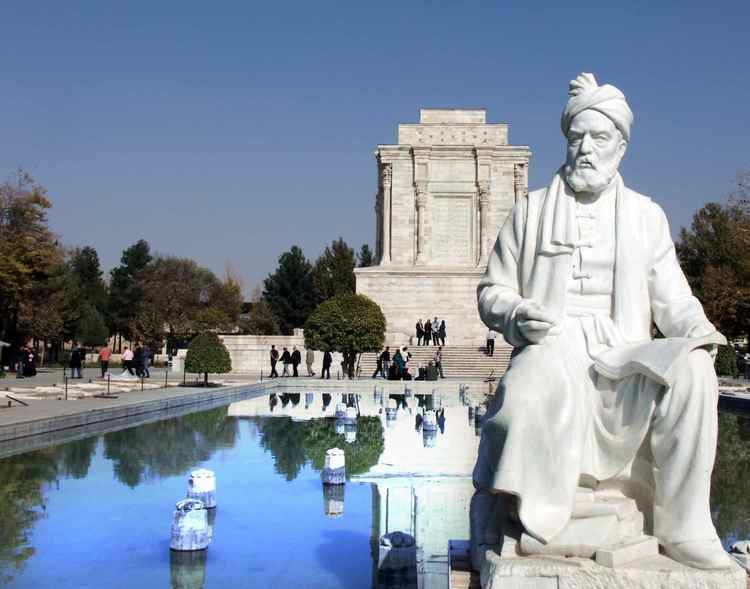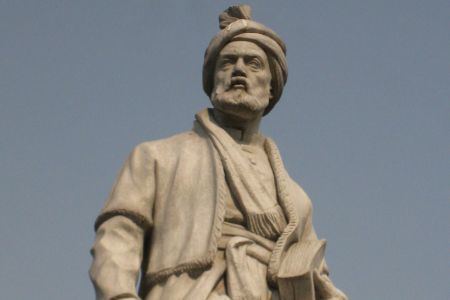Occupation Poet | Name Abu Tusi Role Poet | |
Books Shahnama: The Visual Languag, The epic of kings, The epic of the kings, The legend of Seyavash, The Tragedy of Sohrab a Similar People | ||
Introducing ferdowsi mohammadhasan sadeghi tedxnaghshejahan
Abu ʾl-Qasim Ferdowsi Tusi (c. 940–1020), or Ferdowsi (also transliterated as Firdawsi, Firdusi, Firdosi, Firdausi) was a Persian poet and the author of Shahnameh ("Book of Kings"), which is the world's longest epic poem created by a single poet, and the national epic of Greater Iran. Ferdowsi is celebrated as the most influential figure in Persian literature and one of the greatest in the history of literature. He was called "The Lord of the Word" and "The Savior of Persian Language".
Contents
- Introducing ferdowsi mohammadhasan sadeghi tedxnaghshejahan
- Iran Ferdowsi The Great Iranian Poet Shahnameh
- Name
- Family
- Background
- Life as a poet
- Tomb
- Legend
- Works
- Influence
- References

Iran, Ferdowsi The Great Iranian Poet. Shahnameh
Name

Except for his kunya (ابوالقاسم - Abu'l-Qāsim) and his laqab (فردوسی - Ferdowsī, meaning "paradisic"), nothing is known with any certainty about his full name. From an early period on, he has been referred to by different additional names and titles, the most common one being حکیم / Ḥakīm ("philosopher"). Based on this, his full name is given in Persian sources as حکیم ابوالقاسم فردوسی توسی / Ḥakīm Abu'l-Qāsim Firdowsī Țusī. Due to the non-standardized transliteration from Persian into English, different spellings of his name are used in English works, including Firdawsi, Firdusi, Firdosi, Firdausi, etc. The Encyclopaedia of Islam uses the spelling Firdawsī, based on the standardized transliteration method of the German Oriental Society. The Encyclopædia Iranica, which uses a modified version of the same method (with a stronger emphasis on Persian intonations), gives the spelling Ferdowsī. In both cases, the -ow and -aw are to be pronounced as a diphthong ([aʊ̯]), reflecting the original Arabic and the early New Persian pronunciation of the name. The modern Tajik transliteration of his name in Cyrillic script is Ҳаким Абулқосим Фирдавсӣ Тӯсӣ.
Family

Ferdowsi was born into a family of Iranian landowners (dehqans) in 940 in the village of Paj, near the city of Tus, in the Khorasan region of the Samanid Empire, which is located in the present-day Razavi Khorasan Province of northeastern Iran. Little is known about Ferdowsi's early life. The poet had a wife, who was probably literate and came from the same dehqan class. He had a son, who died aged 37, and was mourned by the poet in an elegy which he inserted into the Shahnameh.
Background

Ferdowsi belonged to the class of dehqans. These were landowning Iranian aristocrats who had flourished under the Sassanid dynasty (the last pre-Islamic dynasty to rule Iran) and whose power, though diminished, had survived into the Islamic era which followed the Arab conquests of the 7th century. The dehqans were intensely patriotic (so much so that dehqan is sometimes used as a synonym for "Iranian" in the Shahnameh) and saw it as their task to preserve the cultural traditions of Iran, including the legendary tales about its kings.

The Muslim conquests of the 7th century had been a watershed in Iranian history, bringing the new religion of Islam, submitting Iranians to the rule of the Arab caliphate and promoting Arabic culture and language at the expense of Persian. By the late 9th century, the power of the caliphate had weakened and local Iranian dynasties emerged. Ferdowsi grew up in Tus, a city under the control of one of these dynasties, the Samanids, who claimed descent from the Sassanid general Bahram Chobin(whose story Ferdowsi recounts in one of the later sections of the Shahnameh). The Samanid bureaucracy used the New Persian language rather than Arabic and the Samanid elite had a great interest in pre-Islamic Iran and its traditions and commissioned translations of Pahlavi (Middle Persian) texts into New Persian. Abu Mansur Muhammad, a dehqan and governor of Tus, had ordered his minister Abu Mansur Mamari to invite several local scholars to compile a prose Shahnameh ("Book of Kings"), which was completed in 1010CE. Although it no longer survives, Ferdowsi used it as one of the sources of his epic. Samanid rulers were patrons of such important Persian poets as Rudaki and Daqiqi. Ferdowsi followed in the footsteps of these writers.
Details about Ferdowsi's education are lacking. Judging by the Shahnameh, there is no evidence he knew either Arabic or Pahlavi.
Although New Persian was permeated by Arabic vocabulary by Ferdowsi's time, there are relatively few Arabic loan words in the Shahnameh. This may have been a deliberate strategy by the poet.
Life as a poet
It is possible that Ferdowsi wrote some early poems which have not survived. He began work on the Shahnameh around 977, intending it as a continuation of the work of his fellow poet Daqiqi, who had been assassinated by a slave. Like Daqiqi, Ferdowsi employed the prose Shahnameh of ʿAbd-al-Razzāq as a source. He received generous patronage from the Samanid prince Mansur and completed the first version of the Shahnameh in 994. When the Turkic Ghaznavids overthrew the Samanids in the late 990s, Ferdowsi continued to work on the poem, rewriting sections to praise the Ghaznavid Sultan Mahmud. Mahmud's attitude to Ferdowsi and how well he rewarded the poet are matters which have long been subject to dispute and have formed the basis of legends about the poet and his patron (see below). The Turkic Mahmud may have been less interested in tales from Iranian history than the Samanids. The later sections of the Shahnameh have passages which reveal Ferdowsi's fluctuating moods: in some he complains about old age, poverty, illness and the death of his son; in others, he appears happier. Ferdowsi finally completed his epic on 8 March 1010. Virtually nothing is known with any certainty about the last decade of his life.
Tomb
Ferdowsi was buried in his own garden, burial in the cemetery of Tus having been forbidden by a local cleric. A Ghaznavid governor of Khorasan constructed a mausoleum over the grave and it became a revered site. The tomb, which had fallen into decay, was rebuilt between 1928 and 1934 by the Society for the National Heritage of Iran on the orders of Rezā Shāh, and has now become the equivalent of a national shrine.
Legend
According to legend, Sultan Mahmud of Ghazni offered Ferdowsi a gold piece for every couplet of the Shahnameh he wrote. The poet agreed to receive the money as a lump sum when he had completed the epic. He planned to use it to rebuild the dykes in his native Tus. After thirty years of work, Ferdowsi finished his masterpiece. The sultan prepared to give him 60,000 gold pieces, one for every couplet, as agreed. However, the courtier Mahmud had entrusted with the money despised Ferdowsi, regarding him as a heretic, and he replaced the gold coins with silver. Ferdowsi was in the bath house when he received the reward. Finding it was silver not gold, he gave the money away to the bathkeeper, a refreshment seller and the slave who had carried the coins. When the courtier told the sultan about Ferdowsi's behaviour, he was furious and threatened to execute him. Ferdowsi fled Khorasan, having first written a satire on Mahmud, and spent most of the remainder of his life in exile. Mahmud eventually learned the truth about the courtier's deception and had him either banished or executed. By this time, the aged Ferdowsi had returned to Tus. The sultan sent him a new gift of 60,000 gold pieces, but just as the caravan bearing the money entered the gates of Tus, a funeral procession exited the gates on the opposite side: the poet had died from a heart attack.
Works
Ferdowsi's Shahnameh is the most popular and influential national epic in Iran and other Persian-speaking nations. The Shahnameh is the only surviving work by Ferdowsi regarded as indisputably genuine. He may have written poems earlier in his life but they no longer exist. A narrative poem, Yūsof o Zolaykā (Joseph and Zuleika), was once attributed to him, but scholarly consensus now rejects the idea it is his. There has also been speculation about the satire Ferdowsi allegedly wrote about Mahmud of Ghazni after the sultan failed to reward him sufficiently. Nezami Aruzi, Ferdowsi's early biographer, claimed that all but six lines had been destroyed by a well-wisher who had paid Ferdowsi a thousand dirhams for the poem. Introductions to some manuscripts of the Shahnameh include verses purporting to be the satire. Some scholars have viewed them as fabricated; others are more inclined to believe in their authenticity.
Influence
Ferdowsi is one of the undisputed giants of Persian literature. After Ferdowsi's Shahnameh, a number of other works similar in nature surfaced over the centuries within the cultural sphere of the Persian language. Without exception, all such works were based in style and method on Ferdowsi's Shahnameh, but none of them could quite achieve the same degree of fame and popularity as Ferdowsi's masterpiece.
Ferdowsi has a unique place in Persian history because of the strides he made in reviving and regenerating the Persian language and cultural traditions. His works are cited as a crucial component in the persistence of the Persian language, as those works allowed much of the tongue to remain codified and intact. In this respect, Ferdowsi surpasses Nizami, Khayyám, Asadi Tusi and other seminal Persian literary figures in his impact on Persian culture and language. Many modern Iranians see him as the father of the modern Persian language.
Ferdowsi in fact was a motivation behind many future Persian figures. One such notable figure was Rezā Shāh Pahlavi, who established an Academy of Persian Language and Literature, in order to attempt to remove Arabic and French words from the Persian language, replacing them with suitable Persian alternatives. In 1934, Rezā Shāh set up a ceremony in Mashhad, Khorasan, celebrating a thousand years of Persian literature since the time of Ferdowsi, titled "Ferdowsi Millenary Celebration", inviting notable European as well as Iranian scholars. Ferdowsi University of Mashhad is a university established in 1949 that also takes its name from Ferdowsi.
Ferdowsi's influence in the Persian culture is explained by the Encyclopædia Britannica:
The Persians regard Ferdowsi as the greatest of their poets. For nearly a thousand years they have continued to read and to listen to recitations from his masterwork, the Shah-nameh, in which the Persian national epic found its final and enduring form. Though written about 1,000 years ago, this work is as intelligible to the average, modern Iranian as the King James Version of the Bible is to a modern English-speaker. The language, based as the poem is on a Dari original, is pure Persian with only the slightest admixture of Arabic.